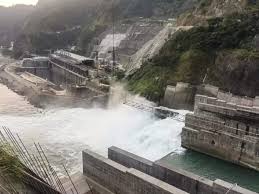Greenko, Adani, JSW to build bulk of India’s 51 GW pumped storage pipeline

India is making a big move in energy storage. Private companies Greenko, Adani Group, and JSW Energy will build most of the country’s huge 51 gigawatt (GW) pumped storage pipeline. This project is key for India’s plan to increase renewable energy use and keep the power grid stable.
Why Pumped Storage Is Vital for India’s Energy Future
Pumped storage hydroelectricity works like a giant battery. It pumps water to a high reservoir when electricity is plentiful. When power demand rises, water flows back down, generating electricity. This system balances supply and demand and supports renewable power.
India’s renewable energy has grown fast. However, solar and wind power can be unpredictable. This causes challenges in keeping the grid stable. Pumped storage solves this by storing extra energy. It releases power when the grid needs it most. This reduces blackouts and cuts reliance on fossil fuels.
Key Players Behind the Pumped Storage Projects
Greenko, Adani, and JSW are the main developers in this effort. Each company has its own strengths:
- Greenko leads in renewable energy and storage. Their experience with hydropower and batteries is vital for pumped storage projects.
- Adani Group has rapidly expanded in solar, wind, and hydro. They have strong finances and expertise in big infrastructure projects.
- JSW Energy works in both thermal and renewable power. They have been investing more in hydroelectric plants.
Together, these firms plan projects in states like Maharashtra, Karnataka, Tamil Nadu, and Himachal Pradesh. These areas have suitable terrain and good infrastructure.
How This Pipeline Benefits India’s Power Grid
The 51 GW pipeline will greatly boost India’s energy storage. This helps reduce pressure on coal plants, which now provide much of the country’s power. Pumped storage will make the grid more flexible and reliable.
It will also reduce renewable energy waste. Sometimes, solar and wind power go unused due to supply and demand mismatches. Storage helps by saving this excess power. India aims to reach 500 GW of renewable capacity by 2030. Pumped storage will be key to this goal.
Challenges and Government Support
Building pumped storage plants is expensive. It also involves land and water use issues. Environmental clearances can slow down projects. But the government offers incentives and faster approvals to help.
Greenko, Adani, and JSW benefit from these policies. Their expertise and financial strength reduce risks. Technology improvements also lower construction costs. This makes pumped storage projects more feasible.
Toward a Clean and Reliable Energy Future
The work by Greenko, Adani, and JSW marks a new phase in India’s energy journey. The 51 GW pumped storage network will ensure steady power supply. It will also allow more renewable energy to enter the grid safely.
With pumped storage, India can better handle peak power needs. It will reduce emissions by cutting coal use. This supports India’s climate goals and sustainable growth.
Conclusion
India’s pumped storage expansion is a major step toward energy security. With Greenko, Adani, and JSW leading, the country will build a strong storage system. This system will store renewable power and keep the grid stable.
This project will make India’s energy cleaner and more reliable. It will help meet growing demand while protecting the environment. The 51 GW pumped storage pipeline is vital for India’s clean energy future.






